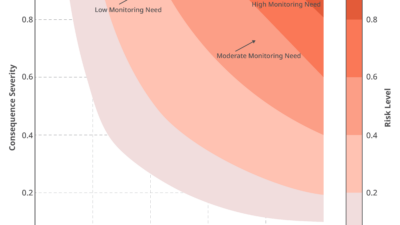Take a critical look at your organization’s key metrics. You may discover the need to revamp how your company measures performance, to be aligned with today’s business environment.

You’ve got senior leadership commitment to long-term lean success, and you’re refining and rolling out continuous improvement strategies. Meanwhile, you’re striving to build organization-wide commitment – from production to maintenance, office, logistics and field service operations – to these new ways. Yet you may have overlooked a key element of sustained lean success: effective metrics that not only signal today’s performance, but also support the drive toward your company’s future competitiveness gains.
Take a critical look at how well your organization’s key metrics enable world-class customer service, innovative product/process development and overall business success. You may discover the need to revamp how your company measures performance, to be aligned with today’s business environment. Simply adding more metrics is not the answer! Here are several pointers for your quest to selectively measure the right stuff:
Evaluate how well your organization’s key metrics reflect a common direction, or "True North"
Your company’s measurement framework should align with overall strategies for achieving what matters. Sounds simple. Yet the pursuit of targets to satisfy customers, shareholders/owners, employees and other stakeholders often triggers an over-abundance of time-consuming metrics. How well have you clarified what the customer wants and related value creation processes? Do metrics clearly reflect what the organization is trying to achieve (and are the company’s goals well defined and broadly understood)?
Assess your organization’s improvement capabilities and whether current improvement initiatives support needed progress
Consider key business metrics such as financial and new revenues, customer loyalty, strategic results and see whether they correlate with improvement initiatives, suggested by Michael Bremer and Brian McKibben in their book, Escape the improvement trap: five ingredients missing in most improvement recipes (CRC Press). Finally, examine how well do employees sustain and replicate performance gains resulting from these initiatives? Consistent, breakthrough performance improvements can provide your organization crucial competitive advantage.
Make it easy to track performance
Provide associates with training and other resources needed to effectively measure their performance against goals, without draining excessive time from value-added activities. Ensuring timely, meaningful performance metrics (linked to their success and the overall success of the organization) enables them to take action, preventing and resolving problems. By paring the list of metrics to track only vital indicators (such as quality and on-time delivery), you’re enabling employees to spend more time on continuous improvement activities as well as training/education that can boost their capabilities and skill levels. A blend of metrics works well for many manufacturers, according to Bremer and McKibben. For example, common metrics include cost/productivity, velocity (lead time and cycle times), customer service (delivery), quality and people development/skills metrics.
Don’t overlook the people side performance measurement linked to sustainable change
Trust is where it all starts, and the lack of trust can hobble all of your organization’s efforts to achieve and sustain world-class performance. How well do your metrics nurture trust and involvement by encouraging team and individual development? Employees and other stakeholders will be more inclined to buy into lean transformation when they understand their roles in planned and current change initiatives. Build engagement and shared accountability by empowering and equipping them to track their progress and resolve issues They’ll be hungrier for accessible and updated key metrics in various functions areas, new product development progress, future sales projections and overall business performance information when they know how they fit into the picture.
Paul Kuchuris is the president of the Association for Manufacturing Excellence (AME). Its "Strategic success through people-powered excellence" annual conference will be held in Jacksonville, FL November 10-14. AME is a content partner of CFE Media. Edited by Joy Chang, Digital Project Manager, CFE Media, [email protected]



